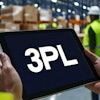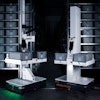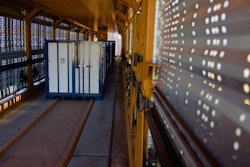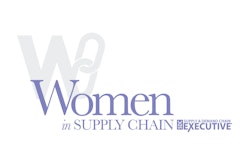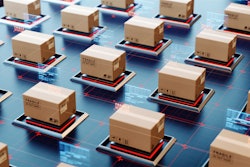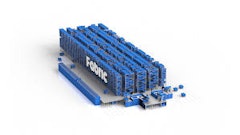
Last year was unprecedented – the pressure on the retail supply chain was enormous at the end of the year with the online holiday shopping surge. The industry experienced shipping restrictions, delivery delays and delivery networks stretched thin. And, that continues into this year. The pandemic has monumentally shifted consumer buying habits, and the e-commerce surge appears to be here to stay.
The key to maintaining a healthy retail supply chain in this current and shifting environment really starts at the retailer level. It is up to retailers to ensure that different parts of the supply chain do not break under unexpected demand this year. Ultimately, addressing some of the challenges in the retail supply chain will require retailers to rethink how they approach delivery and fulfillment and to incorporate advanced technologies to help power it.
Technology will make room for increased flexibility and more options within the delivery cycle, not only helping to offset some of the pressure the supply chain faces but also to help improve operations for retailers.
Not every fulfillment model needs to kook the same
Data-led delivery and fulfillment technology can alleviate supply chain pressure by ensuring retailers offer smart, optimized fulfillment and delivery options. Using artificial intelligence (AI) to create diverse models based on business logic ultimately gives retailers more fulfillment flexibility when demand is high.
Technology not only streamlines the end-to-end delivery process, especially in the last mile, but also optimizes resource utilization so that supply chains are not stretched too thin. Technology also can provide more real-time visibility into the entire delivery ecosystem, enabling retailers to adjust in real-time to ensure more effective operations, the ability to take more preemptive actions and create better collaboration across teams. The enhanced view technology can capture of the delivery cycle leads to better decision-making and that can increase the speed and efficiency of deliveries, ensuring that back-ups and inaccurate delivery estimations – some of the major roadblocks that hurt supply chains – do not occur.
Additionally, intelligent dispatch and routing ensures successful and efficient delivery. Using machine learning technology actually predicts delivery timing, load capacity, resource allocation and even forecasts demand, ensuring that operations run smoothly and that every driver is utilized well, reducing resource waste.
However, apart from improving the delivery cycle, technology also helps to accelerate fulfillment capabilities. It gives retailers the ability to offer fulfillment options like click-and-collect, curbside and buy-online-pickup-in-store (BOPIS). Advanced technology can manage and orchestrate the fulfillment process so that it runs smoothly and does not take away from a positive customer experience, essentially turning storefronts into fully operational warehouses. It does this by synching with retailers’ inventory management systems to give customers better options for pickup based on real-time availability and bandwidth, which helps to reduce congestion on site. It also gives stores visibility into tracking customers en-route to the store, so that they have a more accurate view of when customers will arrive and when their purchase order needs to be made available to them or brought out to their vehicles.
With delivery orchestration technology, every aspect of delivery and fulfilment is data-led, meaning it can intelligently leverage data from fragmented systems, optimizing across the supply chain and uncover roadblocks along the way, all while helping companies to meet specific objectives and KPIs.
Expanding delivery networks
The other key benefit of data-led delivery and fulfillment technology is that it reduces capacity issues by enabling retailers to seamlessly connect with a variety of delivery partners. Being tied to a single delivery partner limits agility within the supply chain – having multiple delivery partners give brands more room to adjust when responding to market and demand fluctuations. The technology helps to truly unify partners across the entire delivery and fulfillment ecosystem onto one platform. Having a single source of truth makes it easier for retailers to effectively orchestrate multi-fleet management (something that would be a significant hurdle to do manually). It can manage and scale internal and external fleets through intelligent and automated scheduling to ensure both a balance of resources and delivery loads across the larger fleet network, automatically optimizing this component of the delivery cycle.
Retailers need to be on the look-out for ways to strengthen the retail supply chain, and adoption of cutting-edge technology that ultimately allows them to be more agile is a great first step. Agility is key to avoiding supply chain issues down the road and navigating unexpected market fluctuations – having that edge will help retailers improve their bottom lines.


